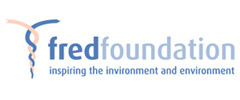World Cancer Day 2013
What if prevention was the cure?
04.02.2013 |WECF

Today, the world faces a global cancer epidemics. One World Cancer Day alone is not enough to make things change. Middle and low-income countries are confronted to an increase of cancer cases, and ageing populations may not provide an explanation for this trend. According to scientists and experts, global cancer prevention policies addressing environmental and occupational risk factors should be urgently implemented.
Increase of cancer cases in middle and low-income countries
According to official figures from the World Health Organisation, 7.6 million people have died from cancer in 2008, and almost 13 million new cancer cases are diagnosed every year. Just like so-called “developed” countries, low- and middle-income countries are confronted to an increasing number of cancer cases: more than 55% of the above mentioned cancer deaths occurred in less developed regions of the world. By 2030, 60 to 70% of the new cancer cases are predicted to occur in developing countries. How will populations cope with this epidemics when the majority of the populations if these countries do not have access to treatments?
Women’s occupational exposures and children’s cancer
Worldwide, most of the 750,000 cervical and breast cancer deaths per year occur during a woman’s reproductive years, and cancer is a leading cause of death for children aged 5-14 in many countries.
According to recent data communicated during Childhood Cancer 2012 in London, an increased risk of selected childhood cancers has been associated with parental exposures to certain chemical classes of solvents, particularly maternal exposure to aromatic and aliphatic hydrocarbons. The study, performed by a team of Italian researchers entitled “ SETIL Study (Italian epidemiological study on the aetiology of childhood leukemia, lymphoma and neuroblastoma): risk of childhood cancers in relation to parental occupational exposure” also showed an increased risks for mother’s exposures particularly in the preconception
period.
The necessity to address environmental and occupational risks factors of cancer
In March 2011, Asturias declaration, a call to action on environmental and occupational determinants of cancer, was adopted following an international conference gathering scientists representatives from NGOs and WHO. The declaration contains 7 recommendations which can make a difference in future public health policies. Amongs experts working together with NGOs such as WECF and advocating for primary prevention measures is Dr Annie J. Sasco, a cancer epidemiologist with an extensive experience of more than 20 years in WHO, who took part in Asturias conference and Childhood Cancer conference 2012, during which she recommended to protect the health of populations, by laws and regulations based on the precautionary principles with the triple objective to protect all people, protect the most susceptible and reach social justice.
Related News
Human Biomonitoring for Europe
Vienna, 26 September: stakeholder forum
28.09.2018
February 4: World Cancer Day
WECF: 'Address primary prevention as it should'
04.02.2015 | WECF
“From Pink to Prevention”: Stopping breast cancer before it starts
A new campaign is launched to getting environmental and occupational risk factors taken seriously in the breast cancer debate.
22.01.2015
"Women are exposed to hazardous chemicals not only differently than men, but they also have a higher susceptibility to them"
Report on the Women and Chemicals Side Event at OEWG2 of SAICM in Geneva, December 17
19.12.2014 | Alexandra Caterbow, WICF
"From Science to Prevention": WECF organized international conference on breast cancer
"What is primary prevention of breast cancer all about in 2014?" Lyon, France, 14th October 2014, Ruban de l'Espoir 2014
03.10.2014 | WECF




































